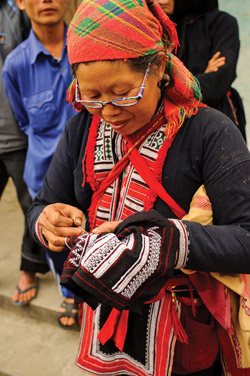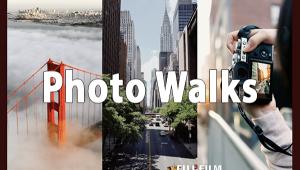On The Road: Middle Of Nowhere: Exploring Remote Possibilities

All Photos © Maynard Switzer
Well, of course I was looking for pictures, and if my image search took me to a remote mountain road blocked by a cement truck, well, that’s because of the kinds of pictures I’m searching for: authentic ones.
It’s no secret that the modern world is spreading its influence everywhere, but in some countries there are remote areas untouched by this influence, and those are the places I like to go. That’s where I find lives lived as they’ve been lived not only for decades, but maybe for centuries. It’s where people make their own clothes, grow their own food, and weave their own baskets, not to sell to tourists—there aren’t any—but to use in their everyday lives. In those places I get a feeling for how people live without any, or very little, outside interference or influence.

In these remote areas the gathering place is the market, where individuals and families bring what they grow or make to sell or trade with others who are bringing what they grow or make. What these markets—and my pictures of them—reveal is the dependence these people have on each other for their needs, and how important it is that each person be able to contribute, to produce something of value.
To find lives being lived in this way, to see the authentic clothing, food, and tools that are part of their lives, I’ve got to get off the beaten path. As you know from previous columns, a guide familiar with the territory, no matter how remote, is the key to whatever access I’m going to have. Guides know more than the language—they know the customs of the people; they know where the markets are and on what days they’re open for business; they know where the roads are difficult, where they’ve been washed out or where there are no roads at all.

From time to time a guide might be able to arrange for me to spend some time with people from the area in their villages, even in their homes, so I can see firsthand how they do their farming and their cooking—basically, how they live their lives. Beyond that benefit, there’s a very practical one: if I weren’t staying in their homes I’d be sleeping on the ground somewhere.
This is not hotel, motel, hostel, or bed-and-breakfast territory.

For my visits to really remote places, I carry plenty of batteries for my cameras and my flashlight (electricity can be a problem) and lots of memory cards instead of a laptop or a digital wallet. As far as cameras and lenses, it’s the same gear I’d take to Paris, only less of it, as I really try to lighten the load to two bodies, three lenses, and one flash if I’m looking at a lot of hiking.
When I visit these places I understand that the trip can become an adventure, and I’m always prepared to be an explorer, an engineer, a construction worker, a climber, and a hiker as well as a photographer. I guess my ultimate verdict on how remote a place is comes down to something I ask myself each time: can I imagine living here? If the answer is no, it’s remote enough for me.

That truck on the mountain road? After a couple of hours trying to help, some other blocked motorists, my guide, and I filled a drainage ditch at the side of the road with boulders and drove over them to get around the truck, which, for all I know, might still be there.


Maynard Switzer’s website, www.maynardswitzer.com, features several portfolios of his travel images.
















































